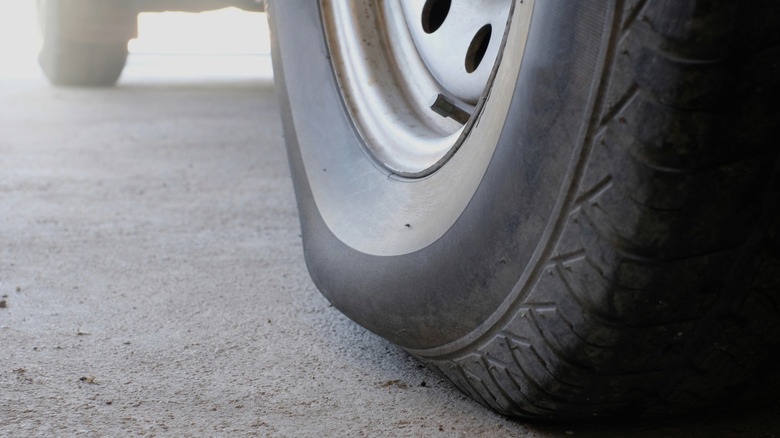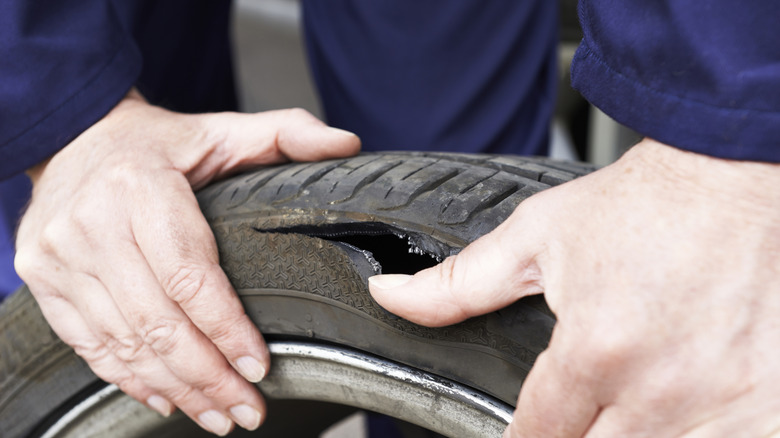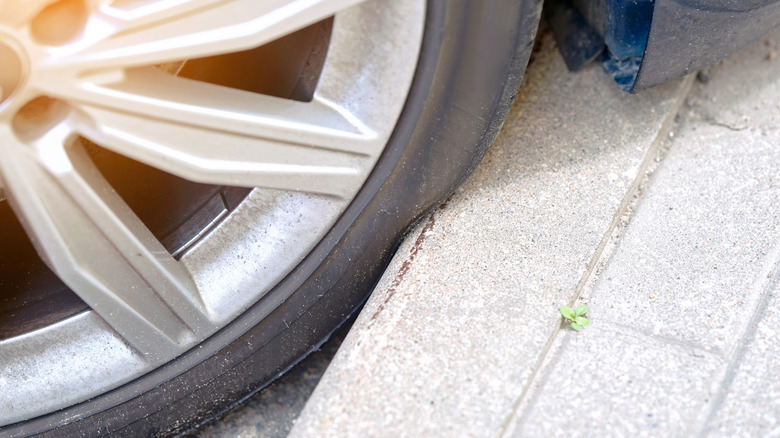What Causes A Bulging Tire? (And Why It Can't Be Fixed)
A bulging tire is more than just an eyesore... it's one of the most crucial warning signs your tire needs to be replaced. These pimple-looking things form when air escapes from the inner liner and pushes out through weakened parts of the tire's structure. And while these bubbles might start small, they can grow much bigger quite quickly. Eventually, this will lead to a blowout.
The usual suspect is damage to the tire's sidewall: the area connecting the tread (the part that meets the road) to the rim (the part that holds the tire to the wheel). This portion of the tire is made up of rubber and reinforced nylon fibers meant to hold the tire's shape under pressure. When the tire hits a pothole, curb, or debris in the road, the force of the impact can hurt these inner layers, letting air seep out between them. That air collects in the outermost layer, which is what creates the bubble.
Once the tire's structure is damaged, there's no fixing it
That damage is why bulging tires absolutely need to be taken seriously: they're a sign of structural failure. And once the inner cords of a tire are broken, the damage is irreversible. You can't patch or plug a bulging tire the same way you might fix a nail puncture in the tread. With a bulge, the damage has occurred deeper inside the tire's casing, where the layers that provide strength and integrity have separated. It's not like fixing a flat tire — There's just no going back from it.
If no reputable tire shop will even attempt to repair a bulging tire, then that should be your sign: You definitely shouldn't drive on one. No matter if the bulge is on the sidewall or the tread, the only solution is a full replacement. If you spot a bulge, your best move is to swap it with your spare immediately. Call a tow truck if you have to — Even short drives on a bulging tire could very well increase your risk of a blowout.
Tips to keep your tires from bulging
To prevent a tire bulge from happening in the first place, it all comes down to proactive tire care and cautious driving. First and foremost, maintain proper tire pressure. Underinflated tires flex more as you drive, which will only the risk of sidewall damage if your tire comes into contact with something. Overinflation can be a problem, too. It makes the tire too rigid and more susceptible to impact damage. Check your tire pressure monthly (as well as before long trips) to make sure you're following the manufacturer's PSI recommendations. You should also pay attention to your Tire Pressure Monitoring System (TPMS) if your vehicle has one... and, as a rule of thumb, don't ignore warning lights.
Beyond inflation, be mindful of how (and where) you drive. Slow down for speed bumps, avoid potholes when you can, park carefully to avoid scraping the curb... All those common sense things. Don't overload your vehicle, either, as more weight means more pressure on the tires. This can worsen existing damage. In hot weather, especially during long drives, be aware that heat can also weaken the tire's structure. Rotating the tires on your car often enough — usually every 5,000 to 7,500 miles — can also help catch early warning signs of damage before a bulge forms.


